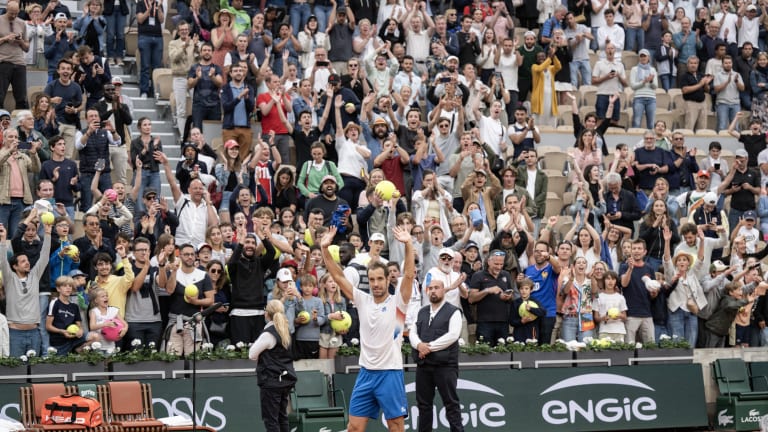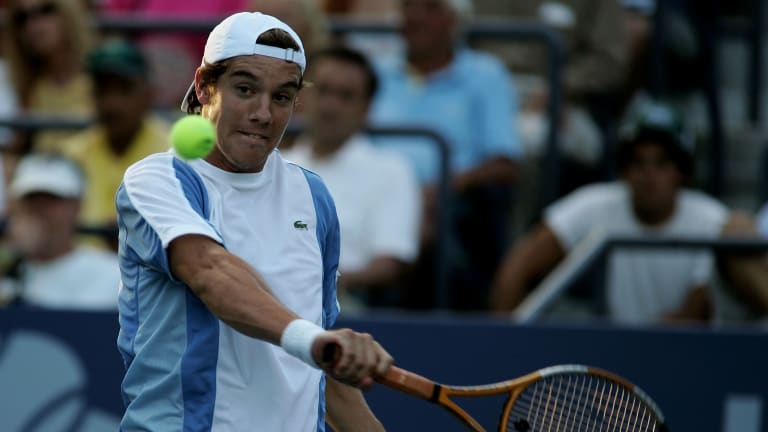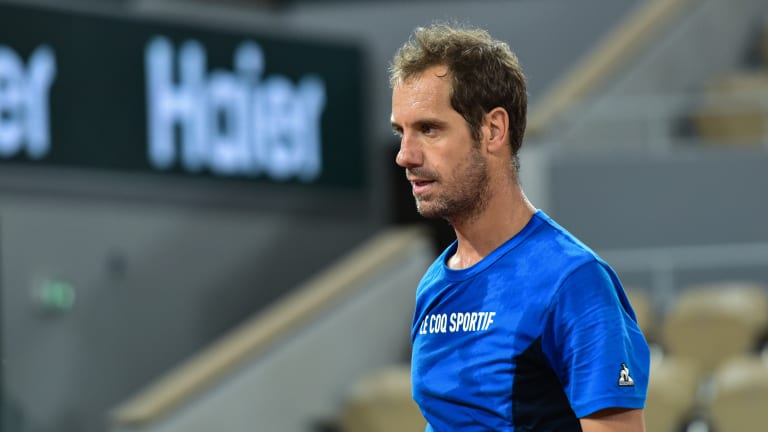PARIS—“Thank you. This is one of the best moments of my career.”
Right back at you, Richard.
I’ve seen a lot of spectacular tennis in my 16 years covering the sport for TENNIS.com. Think about all the history that’s been written in the men’s and women’s games during that stretch of time. To have watched it all unfold on televisions, computers, phones and other viewing portals has been a treat.
But as is the case with most things, it’s what you experience in person that resonates most.
I’m not sure precisely where Richard Gasquet’s 7-6 (5), 7-6 (2), 6-4 win over Borna Coric ranks in terms of best matches I’ve witnessed live, but “when I stop my career,” as the veteran Frenchman also told a jubilant crowd on Court Suzanne Lenglen, “I will think about this moment.”
Half the reason for this is Gasquet himself. By no means do I know the 37-year-old, but you could say we have a history. The first tennis tournament I attended was the 2005 US Open, and after falling for the sport on TV, seeing players like Gustavo Kuerten and Tommy Robredo hit the ball that hard up close was all I had hoped for. It was already a memorable Thursday in Flushing Meadows—and then I happened upon the old Grandstand for Gasquet’s second-round match.



